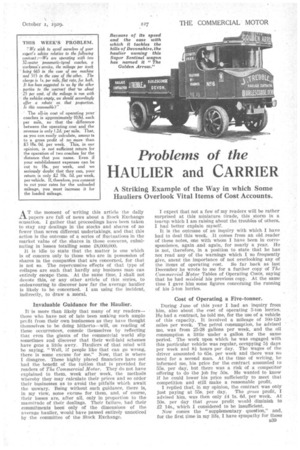THIS WEEK'S PROBLEM.
Page 73

If you've noticed an error in this article please click here to report it so we can fix it.
:'We wish to avail ourselves of your exAert's advice relative to the following contract :—We are operating with two 32-seater pneumalic-tyred coaches, a workmen's service, the mileage per week being 665 in the case of one machine and 515 in the case of the other. The charge is is. per mile, flat rate, for both. It has been suggested to us by the other parties to the contract that 'vs about 25 per cent, of the mileage is run with the vehicles empty, we should accordingly offer a rebate an. that proportion. Is this reasonable?
' The all-in cost of operating your coaches is approximately 10.8d, each per mile, so that the difference between the operating cost and the revenue is only 1,2d, per mile. That, as you can easily calculate, amour ts to a gross profit of no more than 18s. Oct. per week. This, in our opinion, is not sufficient return for the operation of two coaches for the distance that you name. Even if your establishment expenses can be cut to 18s. per week, and we seriously doubt that they can, your return is only £2 10s. (Id. per week, per vehicle. If, therefore, you consent to cut your rates for the unloaded mileage, you must increase it for the loaded mileage.






















































































































